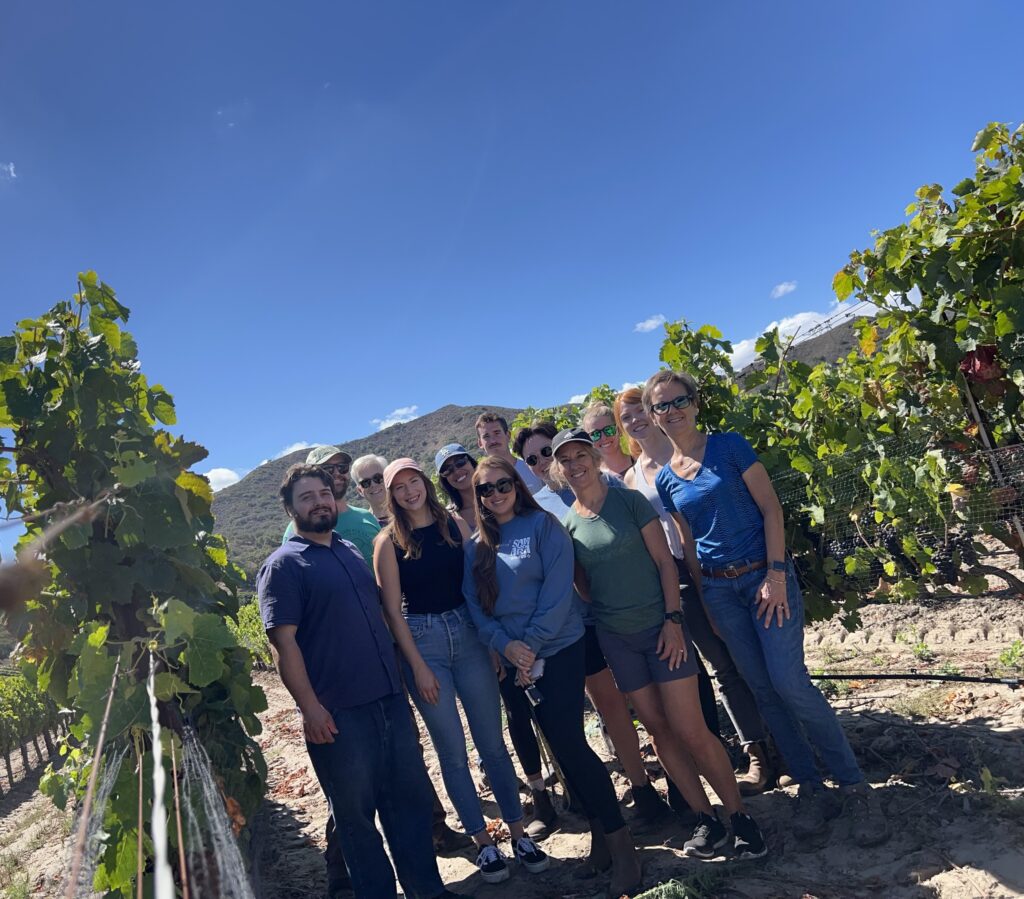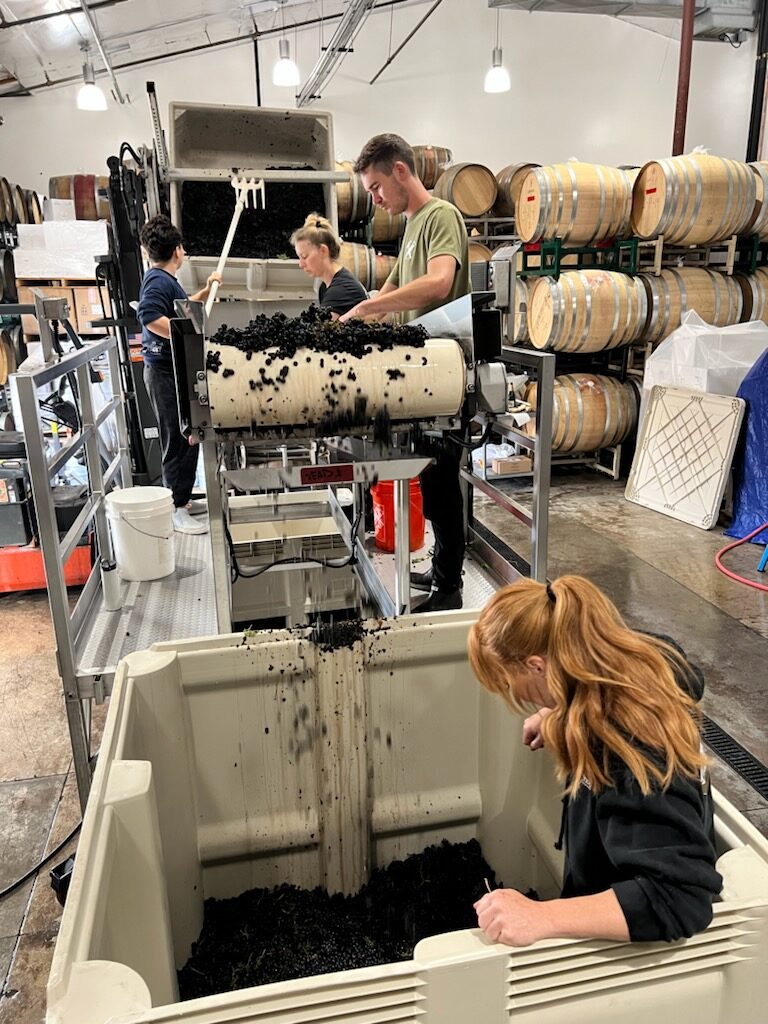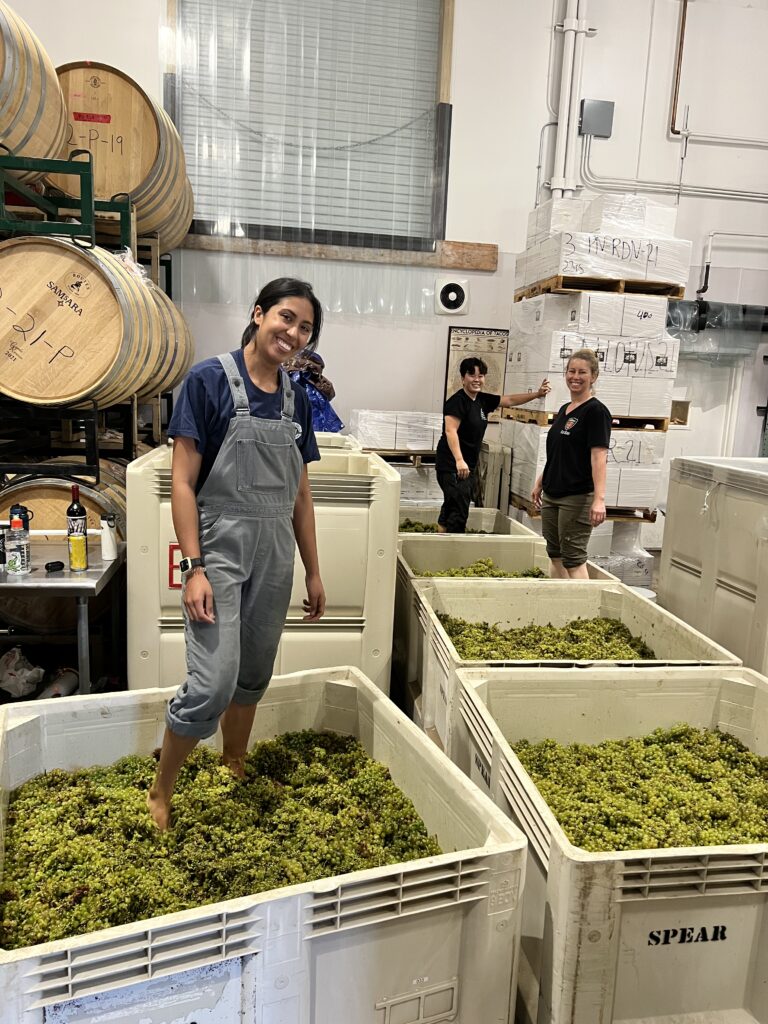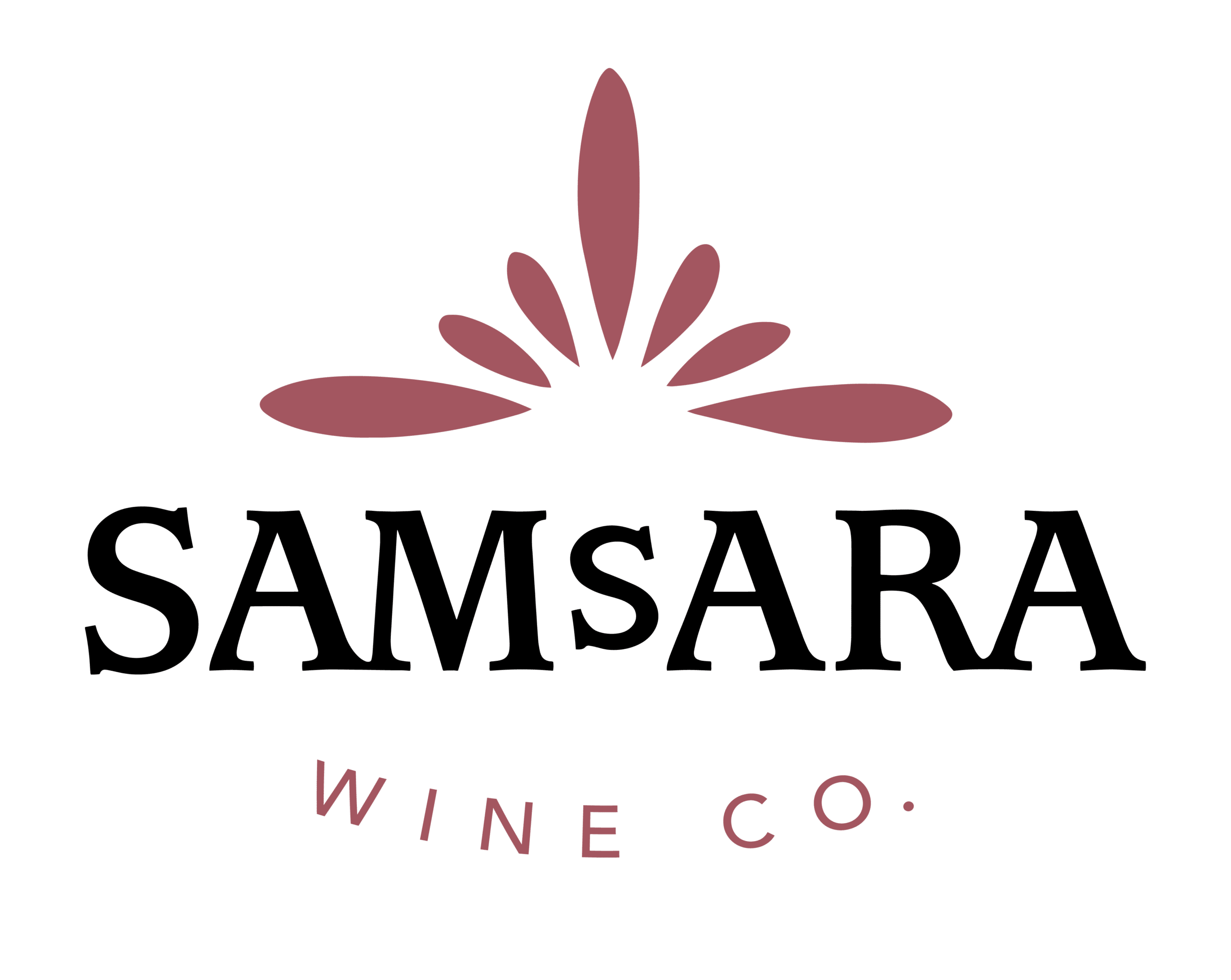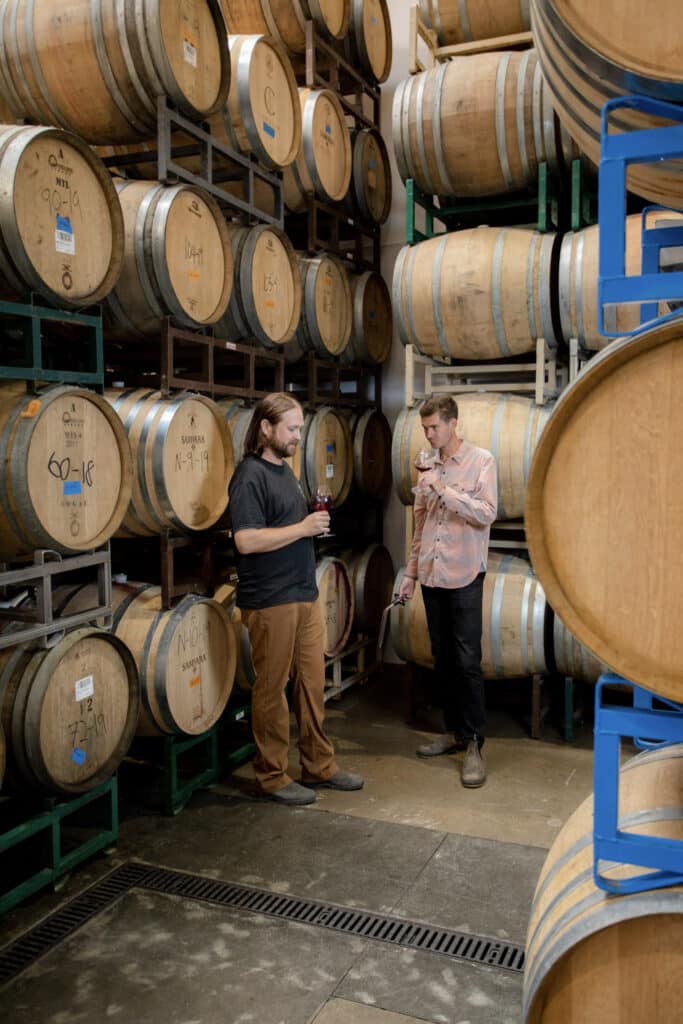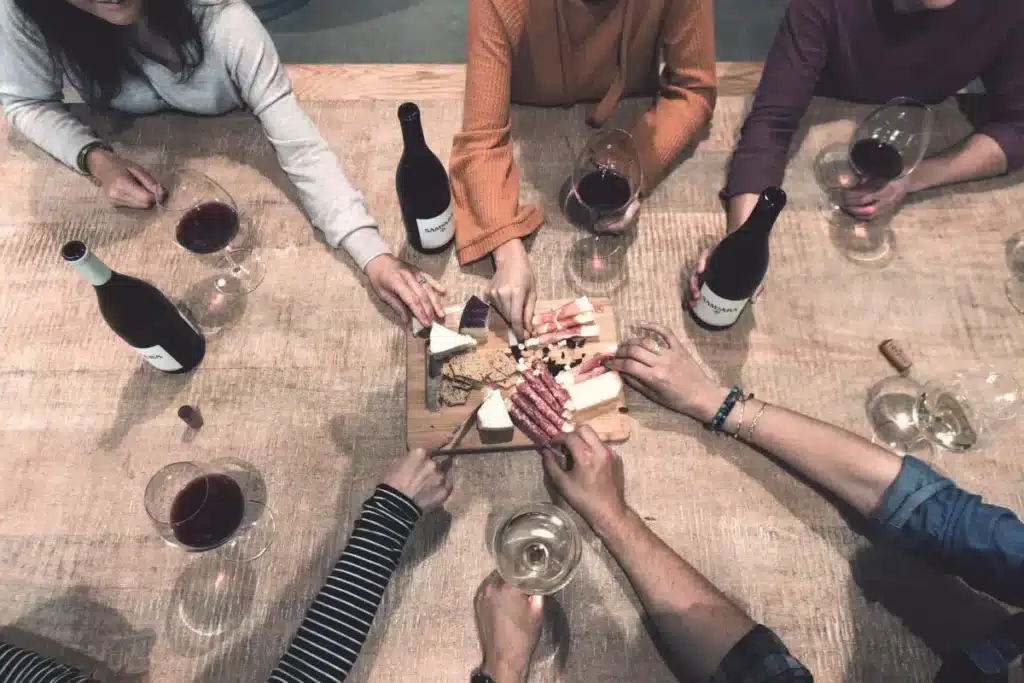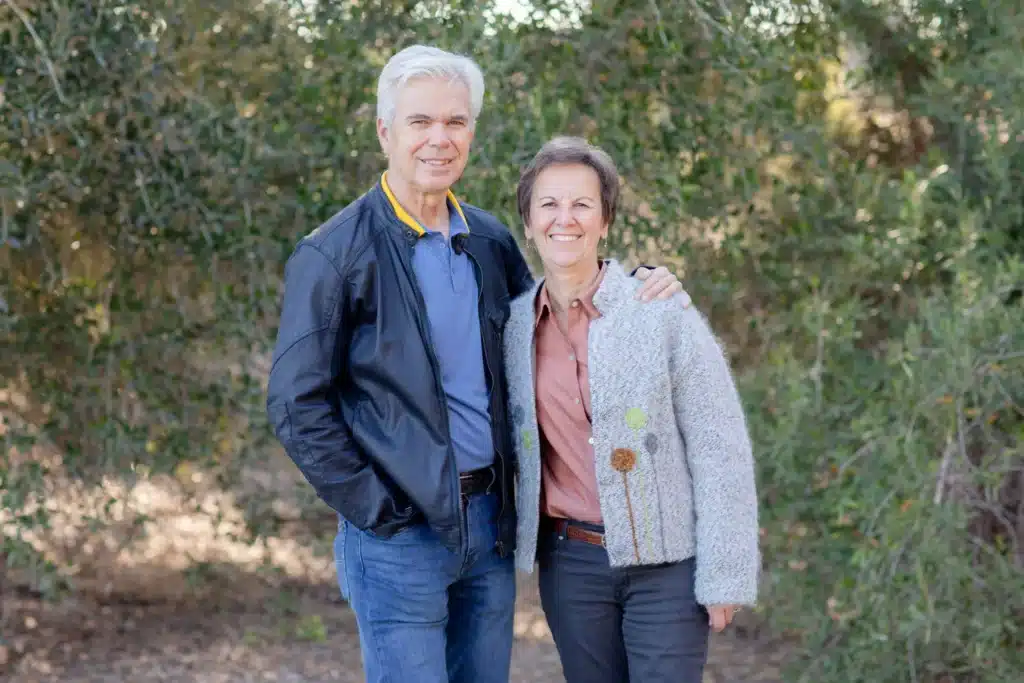No products in the cart.
2022 Harvest Update
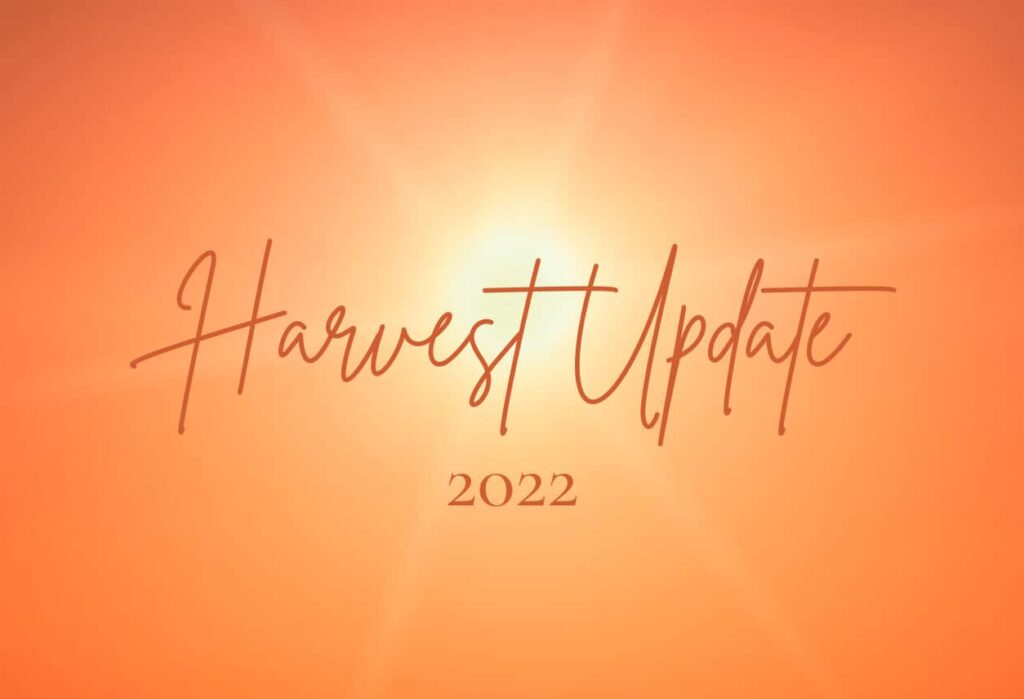
As you recall, Miles and I discussed “Winemaking in Times of Drought” in late June of this year, reflecting on the driest year on record. If you missed it, you can catch up here: https://www.samsarawine.com/education/winemaking-in-times-of-drought/.
Well, just 2 months later, and earlier than expected, harvest revved up to full speed shortly after the Labor Day weekend. All Pinot Noir and Chardonnay grapes were picked in the first week of September and have been fermenting since. We’re just starting to press our Pinot Noir fruit after their long, slow ferment on 100% native yeast. We picked our first Grenache last week and will be picking our first Syrah of the year this Thursday!
Timing for winemaking has been textbook/perfect: Pressing off Pinot Noir has allowed us to bring in Grenache and Syrah as their ideal pick dates occur.
Rewind
The earlier than expected start to harvest was surprising, as all year long we’ve been anticipating a later than normal harvest. The 2022 vintage was remarkably cool all year long, up until recently. Additionally, we had a late ‘bud-break’ this spring with the vines coming out of winter-time dormancy later than usual, which should have led to a later harvest.
The 8 day heat wave with sustained high temperatures beginning Saturday, September 3rd changed the complexion of our harvest schedule. When the weather forecast showed the heat was in fact a “durable heat dome”, we immediately began to work with our vineyard partners to get us our fruit as quickly as possible. Fortunately, because of the strength of our relationships, many of our picks were able to move up in the schedule with little to no advance notice. The good relationships with our vineyard partners are really paying dividends!
Despite the need to adapt quickly to changing circumstances, we are optimistic that our quick pivots are paying off, with several picks having come in ‘right on the money!’ Bentrock Chardonnay, for example, came in literally perfect. Even the picks we were “concerned about” have come in with extremely high fruit quality and no heat damage.
The Role of Low Yields
One of the big factors with the accelerated harvest schedule and fruit ripening earlier than we expected, is the low crop level. Crop levels are down across the board, with some vineyards down 30-50% from our anticipated yields.
What Causes Low Yields?
There are 2 factors driving the low yields we’re seeing in 2022. 1) Cold and windy weather during bud break this spring. This spring was the windiest I can remember. Between the intense wind and the cold weather during ‘flowering’ this spring, the conditions were not favorable for good fruit set. Wind can damage the flowers, or blow them off, causing them to not self-pollinate and turn into grapes, thereby reducing the ultimate crop size/yield. 2) Drought conditions for the last 4-5 years have stressed the vines and we are seeing the cumulative effect of this with lower yields and smaller canopies (leaf mass).
Are Low Yields Good or Bad?
We prefer ‘balanced yields’. However, low yields, while bad for quantity, are typically good for quality, so we’ll take em! The 2022 wines will still be balanced and elegant, but will have great flavor concentration and should lead to a high quality vintage overall.
The big challenge with the low yields is how the low crop levels can exacerbate quick ripening under heat wave conditions. When there’s a lower crop load, it takes less photosynthesis for fruit to ripen. This year, ripening has been faster than I’ve ever seen before.
Of course, lower yields also mean less wine, so keep your eyes peeled for release announcements as the finished 2022 wines will go quickly . . .
The Role of Heat
Fruit quality has been really high so far! No mildew, mold, or compromised fruit in any way leaving us to only contend with the role that 8 days of heat will play on our fruit. The big challenge with the heat is rapid sugar accumulation, and the need to maintain balance between sugar and acidity. In a perfect world, the sugar accumulation builds slowly over time. The grapes start out with really high acid (low pH), and as ripening progresses the acid declines as the sugar increases. With the really hot conditions this September, sugar levels were seen increasing faster than the acid levels were going down. On one hand, this is a challenge because we don’t want the sugar to get too high before the acidity is in the ‘pick zone’. On the other hand, since the fruit is coming in with higher sugar levels we are thankful that there’s a lot of acid to balance out the intense fruit profile we get from riper grapes.
Was This Heat Wave Uncommon?
Yes and no. The Labor Day heat wave occurs 4 out of 5 years in Santa Barbara in the modern era of climate change. It’s more normal than not. This year’s heat wave is the most extreme heat event we’ve ever seen. It was not an optimal heat event as we prefer a ‘long, slow burn’ as opposed to an ‘intense, sustained heat’. Some vineyards have come in right on the bullseye, some have come in with elevated ripeness but also really high acid (which is great for balance!). We will make great wines this year despite a few vineyards coming in at slightly higher levels of ripeness.
Mitigating Heat Wave Risk Through Strategic Vineyard Partnerships
This year’s long, protracted heat spike was scary for every winery in Santa Barbara County. But we are extremely lucky to have excellent vineyard partners, nearly all of which are located on the far west end of the Sta. Rita Hills AVA. Why? Western vineyards are cooler, better protected by the fog, and allow for the crops to ripen later. (There is a 10-20 degree difference between the western and eastern edges of the Sta. Rita Hills AVA, which makes us count our lucky stars that we have (literally) cool vineyard partners).
Proximity to the coast is important because when a heat wave strikes it’s critical for the ripeness of the grapes to not be ‘right on the finish line’. Instead have the ‘buffer capacity’ to take the hot weather without crossing into excessive ripeness territory.
It is also important to note that the heat wave put a HUGE strain on harvest crews, and we’re incredibly thankful for their near round the clock work to make sure we’re able to make exceptional wines, no matter what. Thank you!
Anything new and exciting this year?
Yes! We try something new each year, whether it’s a new vineyard, new wine, or new winemaking approach. This year we are making our first sparkling wine! It will be a Blanc de Blanc made with 100% Chardonnay from Spear vineyard. We picked the fruit for this wine ‘extra’ early, to ensure there were heaps of natural acidity, and that the finished alcohol would finish in a low range.
Conclusion
Drought has been on our minds all year. But when heat, specifically a prolonged heatwave, was added to the mix just after Labor Day, we needed to pivot quickly to ensure a top quality harvest.
Thankfully, SAMsARA is in an excellent position to deal with not only drought and even a profound late season heat event. The far west location of our vineyards, the strength of relationships with our vineyard partners, and the exceptional quality of our day to day farming practices played an important role in 2022.
Despite the extraordinary challenges thrown at us by mother nature, we are optimistic that the 2022 vintage will be another great one for SAMsARA.
